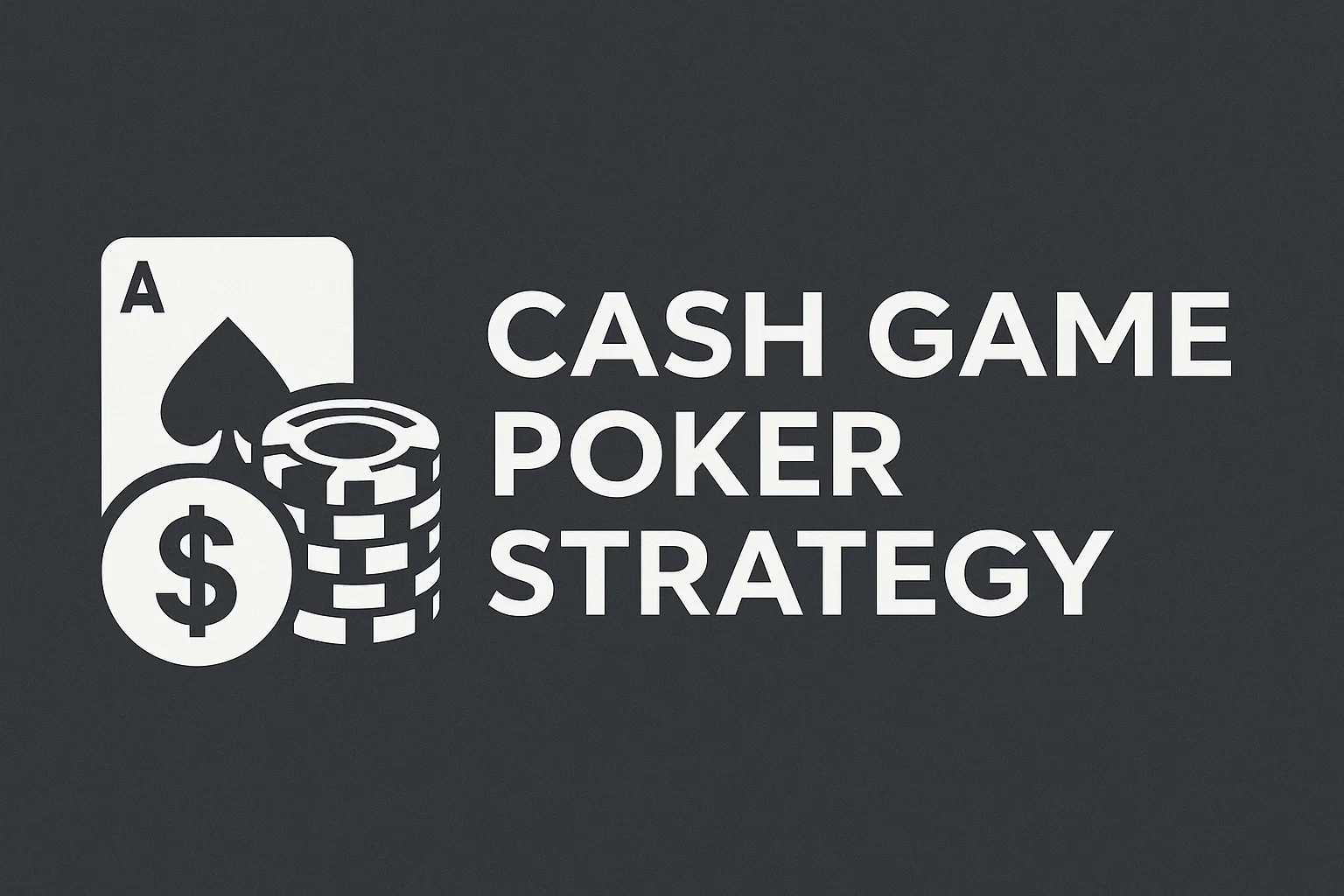Cash Game Poker Strategy

Cash games are one of the most complex poker formats. The reason is largely because stacks of players usually remain at about 100 big blinds. Such a reality shifts the majority of action to the postflop era, whereas in tournaments much of the chips gets accumulated preflop through all-ins. In cash games, there are countless strategic nuances that an amateur needs to understand before sitting down to the tables. As when you choose download casino card games apps, preparation and information are essential before plunging into actual action.
Like MTTs, cash is also one of the core poker disciplines. At cash tables, you must constantly adjust to your opponents and change your style based on the stakes and number of players. In cash, variance is significantly lower than in tournaments, but you must be ready for long downswings and prepare your bankroll for losing sessions. Cash game strategy is a very wide topic to learn in one day.
Here we will cover a few of the most well-known strategies, along with some cash play specific tips that will help you to get the fundamentals of it.
Advantages and Disadvantages of Cash Games
First of all, let's compare advantages and disadvantages of cash games and tournament poker:
Advantages
- More lifestyle flexibility. Players of MTTs are tied by tournament schedules and receive only short breaks during the game. Cash game players schedule their playing time by themselves.
- More to analyze. Without worry about pay raises or rising blinds, you can focus on solid postflop basics and exploiting your opponents.
- Fewer variance swings. You won't see tournament-style brutal downswings. While downtrends happen, good bankroll management and consistent improvement will limit losses.
- Smaller bankroll requirements. In MTTs, even 100 buy-ins may fall short. For cash games, 40–50 buy-ins per stake level are usually sufficient.
Cons
- Tougher competition. Dedicated players prefer cash because it requires deep strategic mind. Lower variance and lifestyle freedom are attractive to dedicated grinders.
- Potential tedium. Witnessing the same players playing the same can be boring, even to dedicated grinders.
- No massive single-session wins. A good cash day might amount to +2–3 buy-ins, which is peanuts when compared with MTTs where a single win is +100 buy-ins.
Higher rake. Particularly at micro stakes, rake is "cruel." In cash games, you'll pay rake for every pot you reach the flop in, while in tournaments it's paid only once, for a single buy-in.
Cash Game Strategies by Stack Size
The first question is: with which stack size will you sit? Your choice determines the strategy:
Short Stack Strategy (SSS)
This is to purchase in for 20–40 big blinds. It is extremely numbers-driven, since the stack is tiny. It is equivalent to playing late in a tourney. For beginners, this is a great starting point because:
- You will not lose lots of chips playing it book-style.
- You'll avoid a lot of costly postflop mistakes.
The majority of poker rooms however, now require a minimum purchase of 40BB or more, essentially removing true short-stack play.
Mid Stack Strategy (MSS)
Here you invest for 40BB or approximately half of the max stack allowed. It's a bit more complex than SSS and requires more postflop skills. The strategy became popular when top poker sites raised minimum buy-ins to the extent that this approach bridged the difference between short and deep-stack playing.
Big Stack Strategy (BSS)
Most advanced and most in-demand strategy. You put up 100BB or more and look to win the most utilizing deep-stack play and advanced postflop skill. Mistakes in such play are costly, so using tracking software and equity estimators is strongly recommended for repeat profitability.
Apart from stack size, there are many other strategic considerations that go into cash games, which we cover now.
Cash Poker Playing Tips
Don't Play Against Regulars
Don't waste time on wars with pros. Play with amateurs who are most likely to pay off your solid hands. Use color-coding tools in your poker software to determine who the tight players are. Micro stakes, and the vast majority of recreational players, are content to "donate" their chips—so don't complicate things with clever bluffs.
Raise More Frequently With Solid Hands
When holding top pair or better, raising is usually stronger than checking. These hands are favorites to win, so build the pot right away. For example:
- A♣K♦ on a K♥T♣2♦ board
- K♠T♣ on a T♥3♦6♣ board
- Q♥Q♦ on a J♣7♥5♦ board
The Power of Position
Your table location has a significant effect on outcomes. The button is the optimum seat, going last with the most information. The cutoff, sitting immediately to its right, also has strength. Early positions are worst because you go first with fewer facts—so beginners should play only high-end hands there. The closer you are to the button, the wider your playable range may expand.
Bluff Logically
Bluffing is thrilling but requires thoughtful consideration. Each bluff is a story that will attempt to convince your opponent that you have a better hand. To succeed, your actions must seem rational and believable to them. Random and illogical bluffs against skilled players will most frequently be costly to you.
Know When to Quit
Arguably the most important consideration: whether to stand up and leave. In cash games, you can leave at will. Common quitting points are:
- Playing for a set amount of time (e.g., two hours).
- Reaching a certain number of hands played (e.g., 3,000 hands).
- Experiencing tilt or fatigue after bad beats.
- Not being able to get into profitable tables at your buy-in level.
Sometimes the best thing for your bankroll and your psyche is simply to leave.


